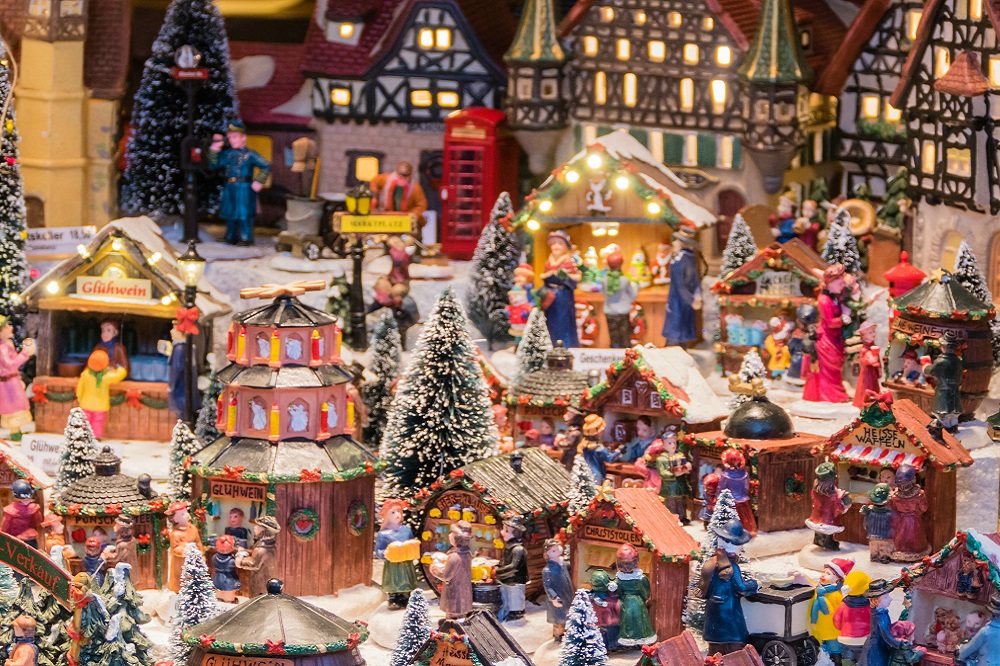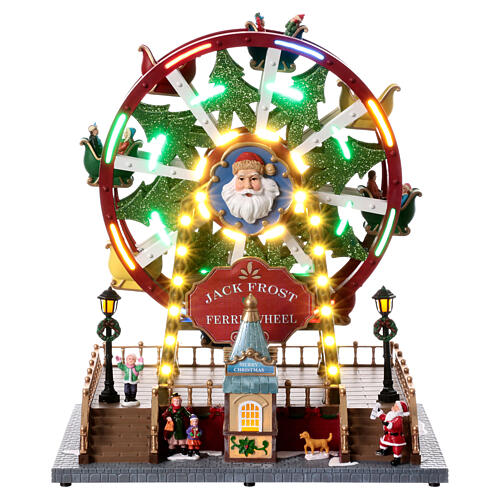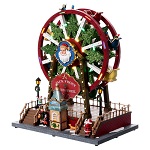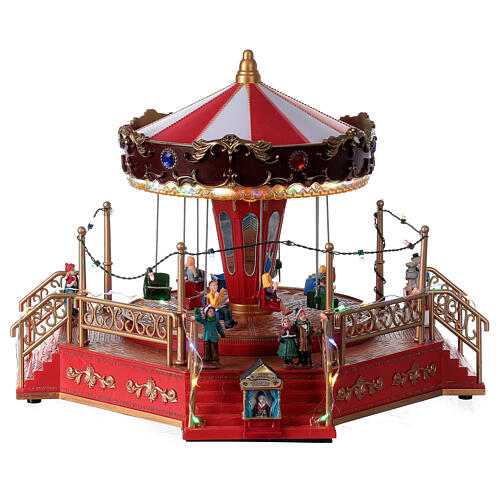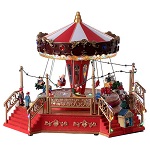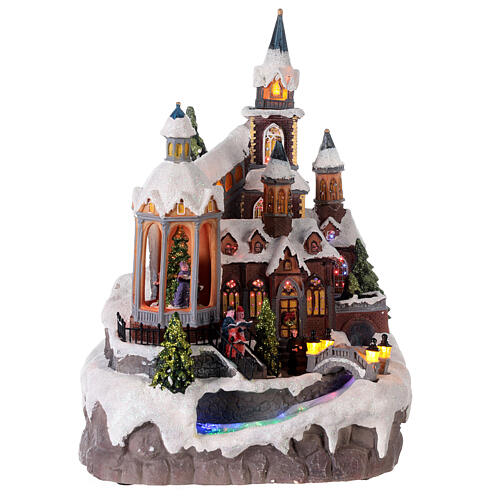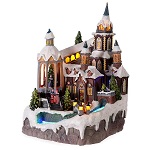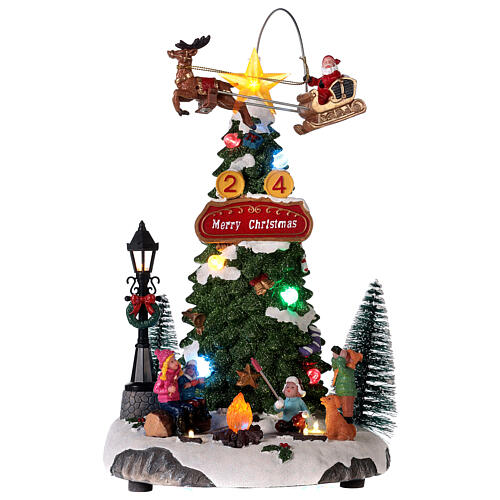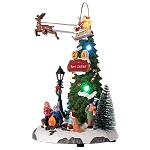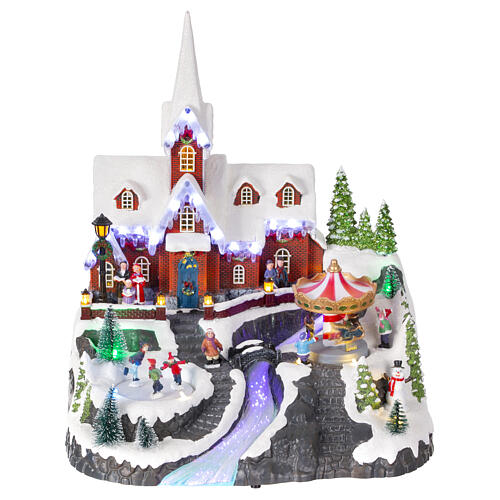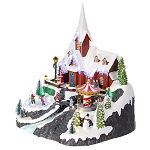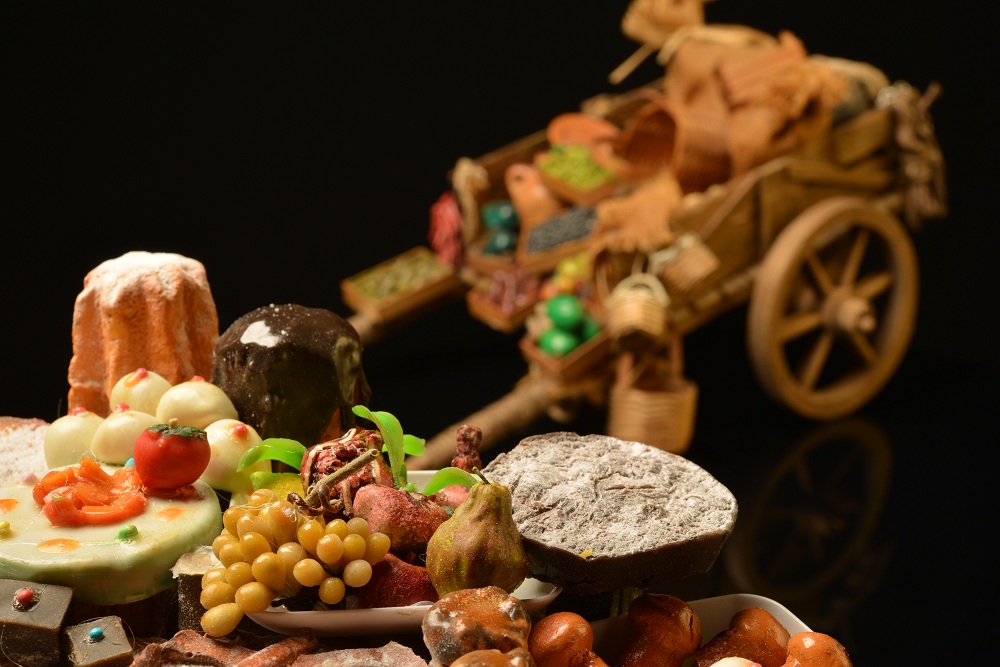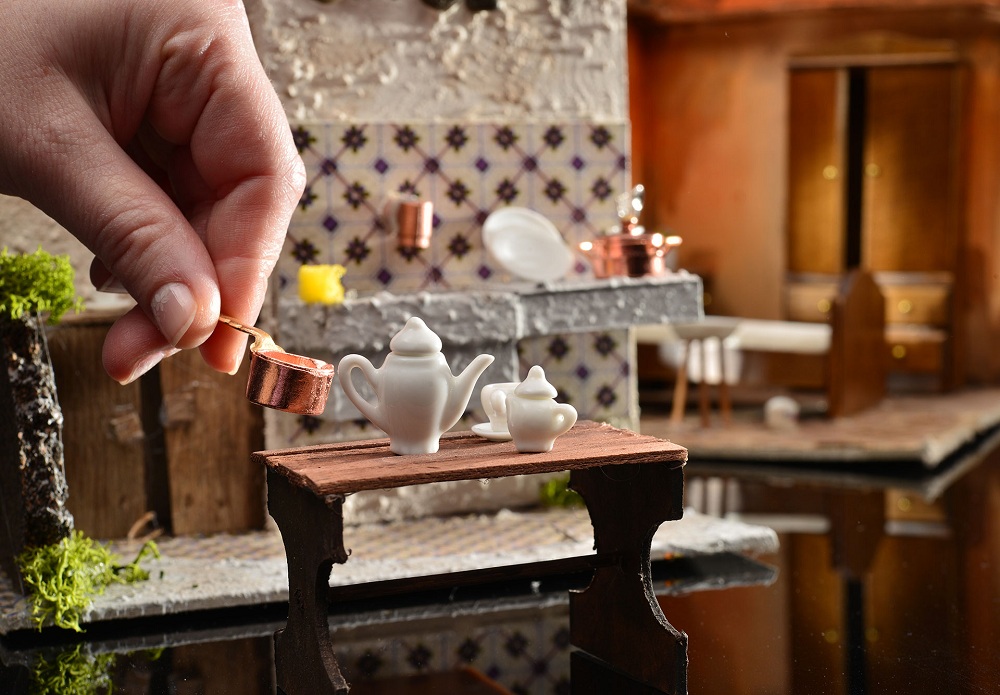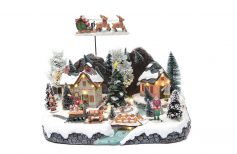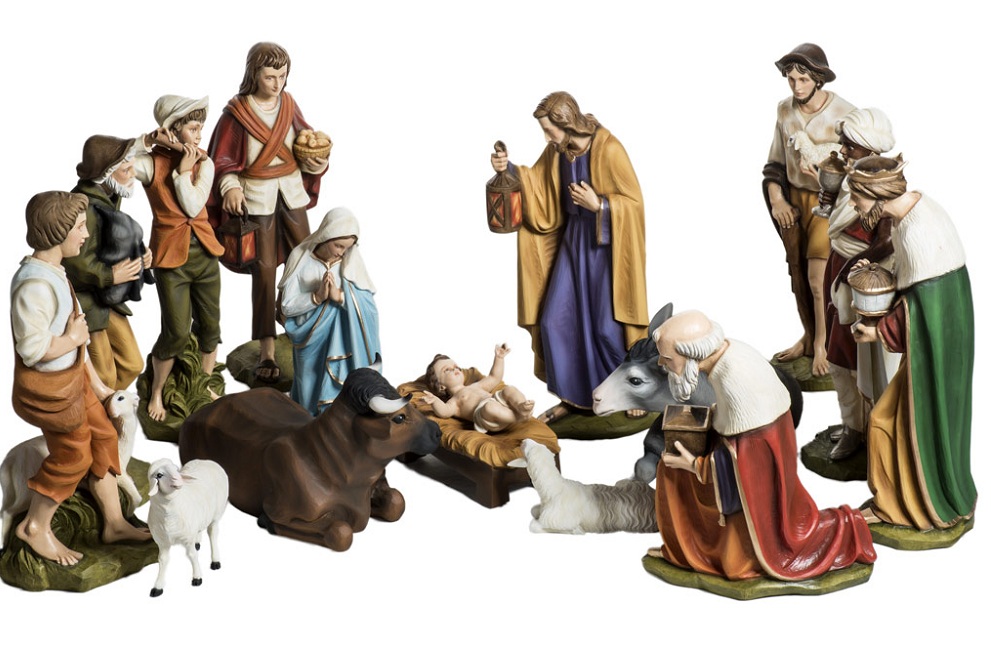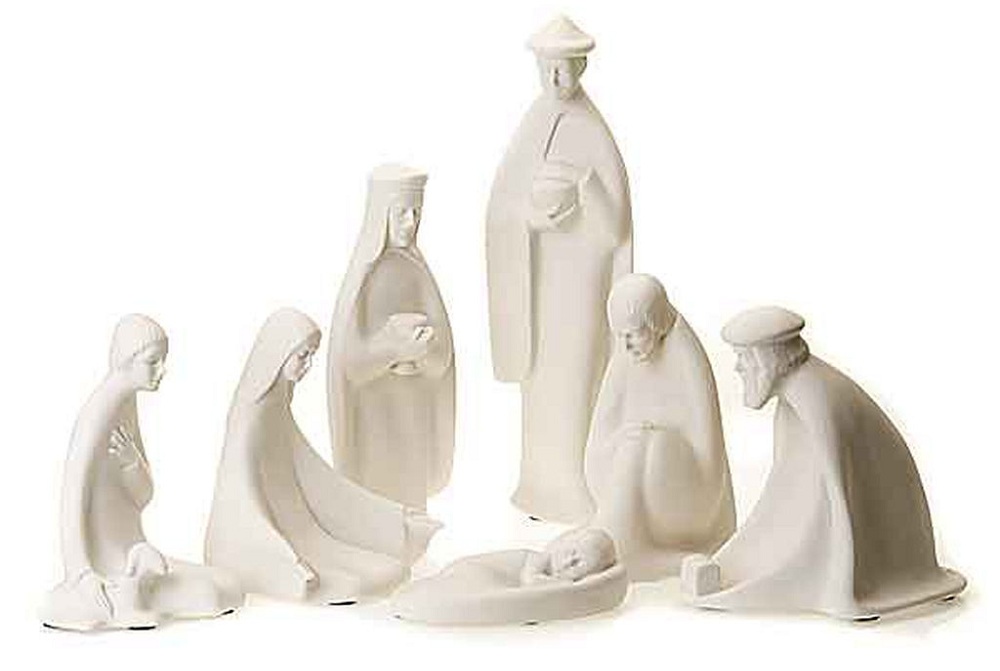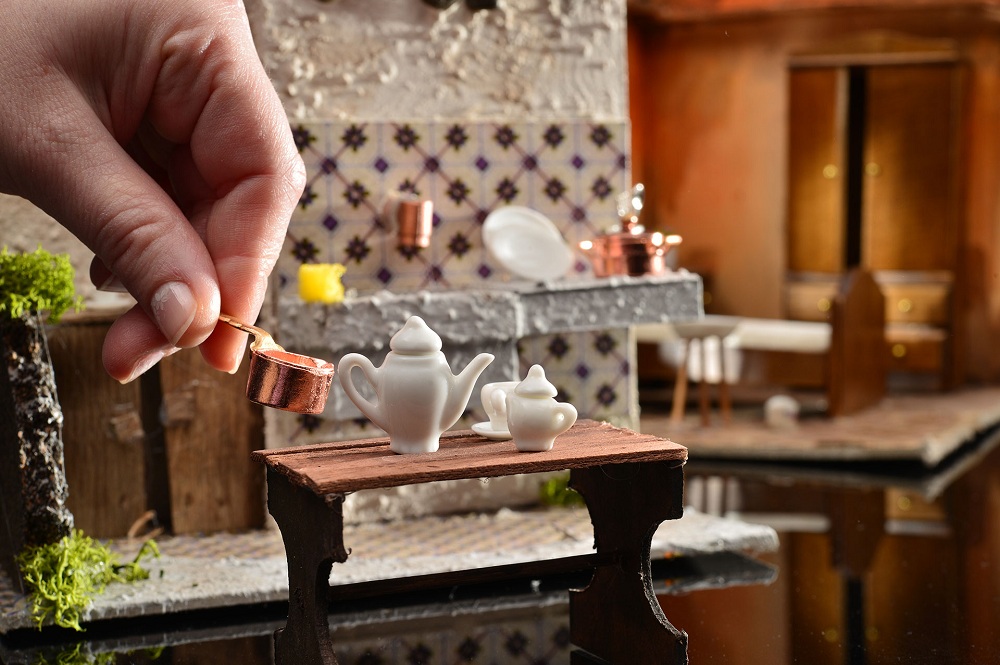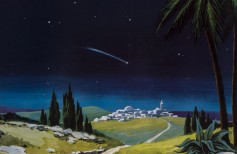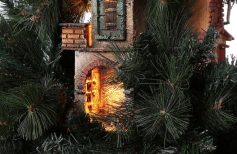Miniature Christmas Villages are an original and novel way of bringing the atmosphere of the Festival into our homes. Let’s find out how they are built and what their characteristics should be
Contents
Why not build a miniature Christmas village in place of the Nativity scene? Until some time ago such a statement might perhaps have given rise to some perplexity. Yet miniature Christmas villages have now become a custom in many houses, even in our country where the tradition of the Nativity scene is so deeply rooted. Moreover, many types of traditional Nativity scenes can also be compared to villages reconstructed in detail, with houses, streets, mills, fountains, and inns, in an imitation of historical settings linked to our past. Think of the Neapolitan Nativity scene, which recreates the atmosphere and characters of 17th-century Naples, and the many Nativity scenes with a historical setting that refer to the Italian Renaissance, or to the Palestine of the time of Jesus.

Animated statues in the Neapolitan Nativity scene
The Nativity scene is one of the most famous and spread traditions connected to Christmas
The miniature Christmas villages are in some ways profane Nativity scenes, as they differ from the traditional ones in that they do not represent the Nativity of Jesus. But in recent years they have also conquered adults and children in Italy, with the magical and joyful atmosphere they know how to create.
Their tradition is linked above all to the United States and the Nordic countries, which also inspire their atmosphere and architecture, although as we will see there are different types, all characterised by well-defined elements. In general, they are composed of houses, shops, and churches, arranged along narrow streets illuminated by streetlights, and often enriched by fountains, ice rinks, Christmas trees, and even rides. All are immersed in a winter landscape, with snow, costumed characters, and often the kind and colourful presence of Santa Claus.
How were miniature Christmas villages born?
The history of miniature Christmas villages
Handmade houses and miniature buildings were used as Christmas decorations as early as the 18th century in some countries of Germany and Central and Eastern Europe. The inhabitants of those areas rebuilt with recycled materials, wood and cardboard, the places where they lived, small rural villages and suburbs. This tradition moved to the United States with immigrants and even there began to appear small colourful and picturesque scenarios built at the foot of the Christmas Trees. Traders understood the potential of such a tradition, and so the first cardboard houses appeared on the market, which anyone could buy to decorate the house and create their own personal Christmas village. They were called putz houses and had a Germanic style that Americans liked very much.
After the First World War, the production of putz houses passed to some Japanese companies, which enriched them with coloured cellophane windows and mica powder sprayed on the roofs to recreate the effect of snow. They also began to illuminate the interior with small lights, so that the glow could be seen from the windows.
After a setback around the 1950s and 1960s, in 1976 a Minneapolis retail florist, Bachman’s, created a line of miniature Christmas houses that were enriched every year with accessories and new buildings, sparking a real passion among collectors.
Today, among the main producers of Christmas decorations of this kind we can count the Lemax Villages, of the eponymous company founded in 1990 and which for thirty years has been one of the main points of reference for collectors around the world. Searching online you can find villages of all kinds, from those with a Victorian setting to those inspired by the atmospheres of Charles Dickens, but also modern villages, the 1950s, and small fantastic worlds with houses made of sugar and inhabited by men of gingerbread.
Building a miniature Christmas village
If someone wants to try to build their first miniature Christmas village, what should they do? It can be an alternative idea to classic Christmas decorations, and it’s easier than you might think. In our online shop, you will find a wide range of very special buildings and scenarios to build a truly complete and magical Christmas village. You can start with the delightful church, which will be the heart of your miniature village, flanked by a large Christmas Tree decorated and decorated with sparkling glitter that captures the reflections of the many multicoloured LED lights. The small scenery is also enriched by a system that transmits Christmas songs and is populated by many cute characters. The beautiful Ferris wheel and the carousel with the child seats will create a festive moment in the party, with their colours and joyful atmosphere, festive children, bright lights and cheerful sounds. As an alternative to the church, you can put a beautiful Christmas Tree in the centre of your miniature village, set in the centre of the town square, decorated with festoons and Santa lights on a crane and children climbing the stairs. And then of course many houses, such as the beautiful one with the waterfall illuminated by coloured LED lights.
Type of village
If you want to try your hand at the business of building a miniature Christmas village, first of all, you will have to decide on the type of village you want to build. Will you choose to build a classic Victorian village, or rather a mountain village, complete with a skating rink and small skiers? Would you like to recreate the atmosphere of Charles Dickens’ novels with a Dickensian village, or perhaps you will try to rebuild Santa Claus’ village, with a little train that crosses it bringing gifts? Your imagination is the only limit. There are even Christmas villages by the sea, with fishermen! You can also decide to put together elements from different settings, although the beautiful thing about miniature Christmas villages is often the consistency and continuity between the elements that compose them. But with a little inventiveness, everything can be arranged to create a surprising effect.
The heart of the village
Once you have chosen the type of village you want to build, you will have to determine which will be the centre of the entire village, its centre and heart. We have already mentioned the church, or the Christmas Tree in the town square. It must be something that gathers the interest of the characters around it, and that will hit the attention of those who admire the village first. Once the heart of the village is established, there will be no need for many more houses and elements to enrich it. Instead, it will be important to create the path of streets and avenues illuminated by street lamps that will lead to that point, realistically and dynamically. And of course, you will need to populate your journey with little characters that will make your village alive and real more than ever.

The base and background
Two other fundamental characteristics to choose from, when you decide to build a village, are the support base and the background.
The base is of great importance because all the buildings and elements of the village will need to be connected to the power supply, and therefore it will be advisable to choose a support that allows you to easily hide the wires, switches and connections. In addition, the sockets and switches must be easily accessible when you have to turn them on or off. The best solution is probably a wooden board or a series of boards placed side by side and supported by trestles, where you can drill holes through which the wires pass and which you will cover with sheets to hide the entire system. As for the village itself, some rock paper, moss and other small tricks will help you hide the remaining electrical wires.

The background will be useful to give your miniature village more realism and depth. You can make it yourself, painting it, or making it with boxes or books covered with rock paper, also to give a sense of perspective, or buy one of the many beautiful backdrops available online and made specifically for these villages, with a beautiful starry sky, mountains covered with snow, or maybe the lights of the city.

